As a software engineer the keyboard is one of the tools I will physically interact with for a large part of my day. Many other professions are also finding themselves interacting with keyboards too.
It’s important, then, to get the right keyboard. The only question is, which one is the right one. Like all engineering question, the answer is, it depends.
The only person that can answer the question is the person that will be using it, and the only way for the answer to be accurate is for the person answering to be informed.
Note: Almost all of the information presented here is for people using English character sets. For people that use other languages with modified characters, or completely different characters, there will be more that needs to be investigated.
So, with that in mind, when you choose a keyboard for yourself, you should know that the following variables exist, and each should be taken into account when making your decision.
- Style of keyboard
- Number of keys
- Material that the case is made of
- Type of switch desired
- Feel of the keycaps
- RGB lighting
Style
There are a number of styles of keyboard, most of us are familiar with a single “traditional” QWERTY, or the similarly shaped Dvorak keyboards, but there are others, such as Ortholinear
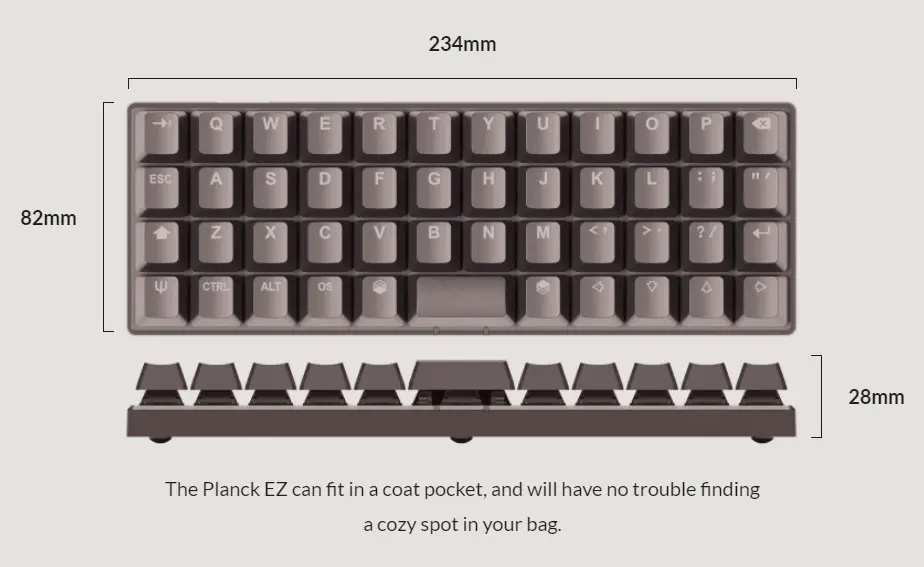
or Ergonomic
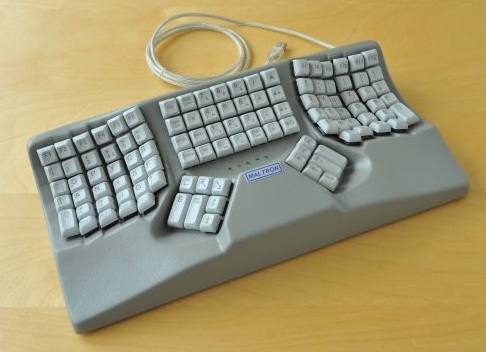
The decision that needs to be made is, use a “traditional” board, or change the style of the keyboard so that the keys you use are in a position that makes for what some people believe is easier on your body.
Number of keys
A QWERTY keyboard with 104 (or 108) keys is considered to be a “full sized” keyboard
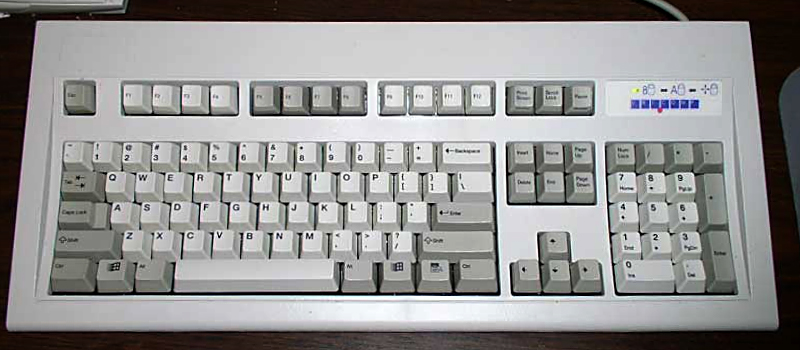
Boards are then described with that as a reference, TKL is a ten key less version, like my Ducky One
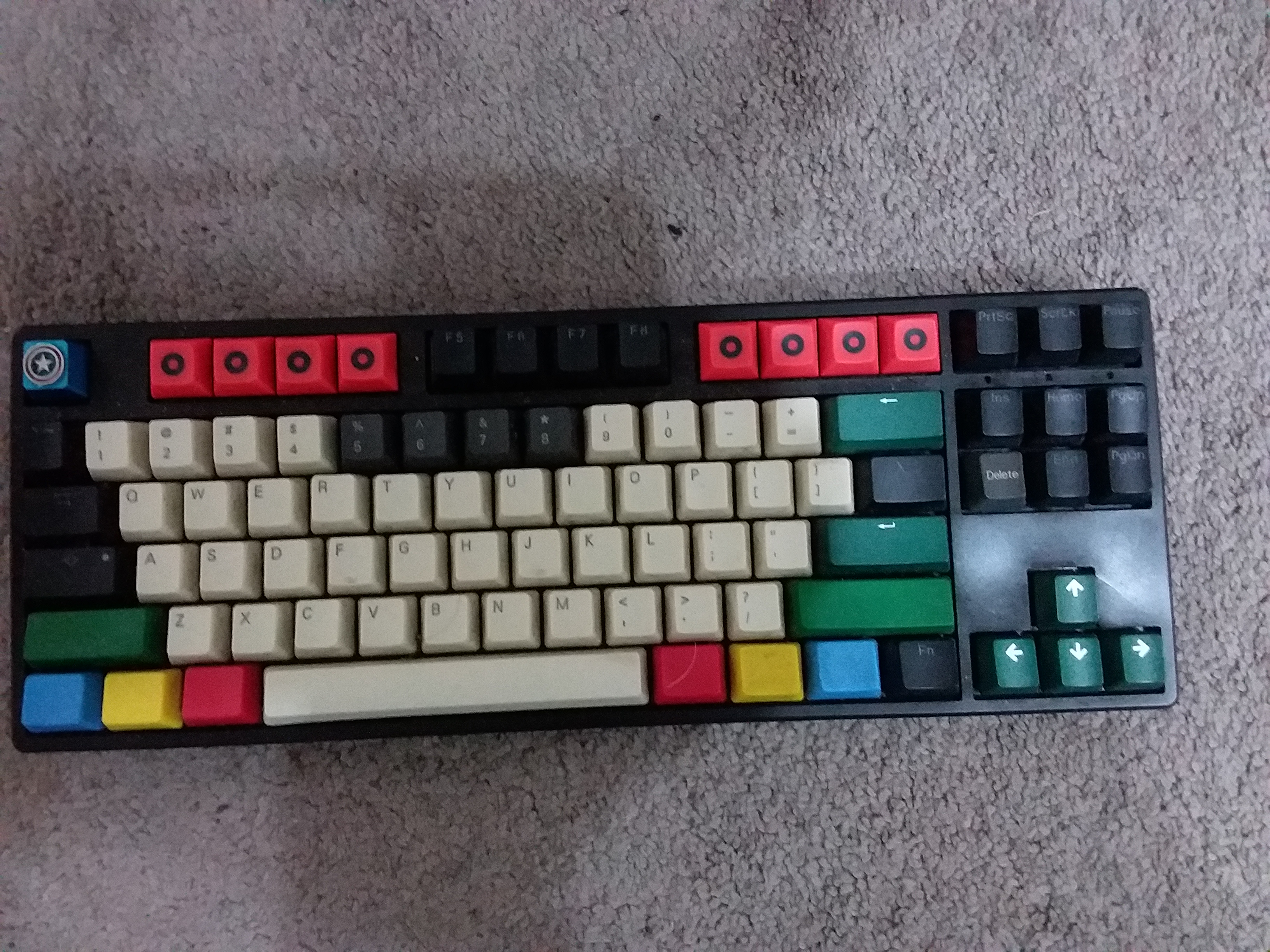
68% has 68 keys, like my Tada 68
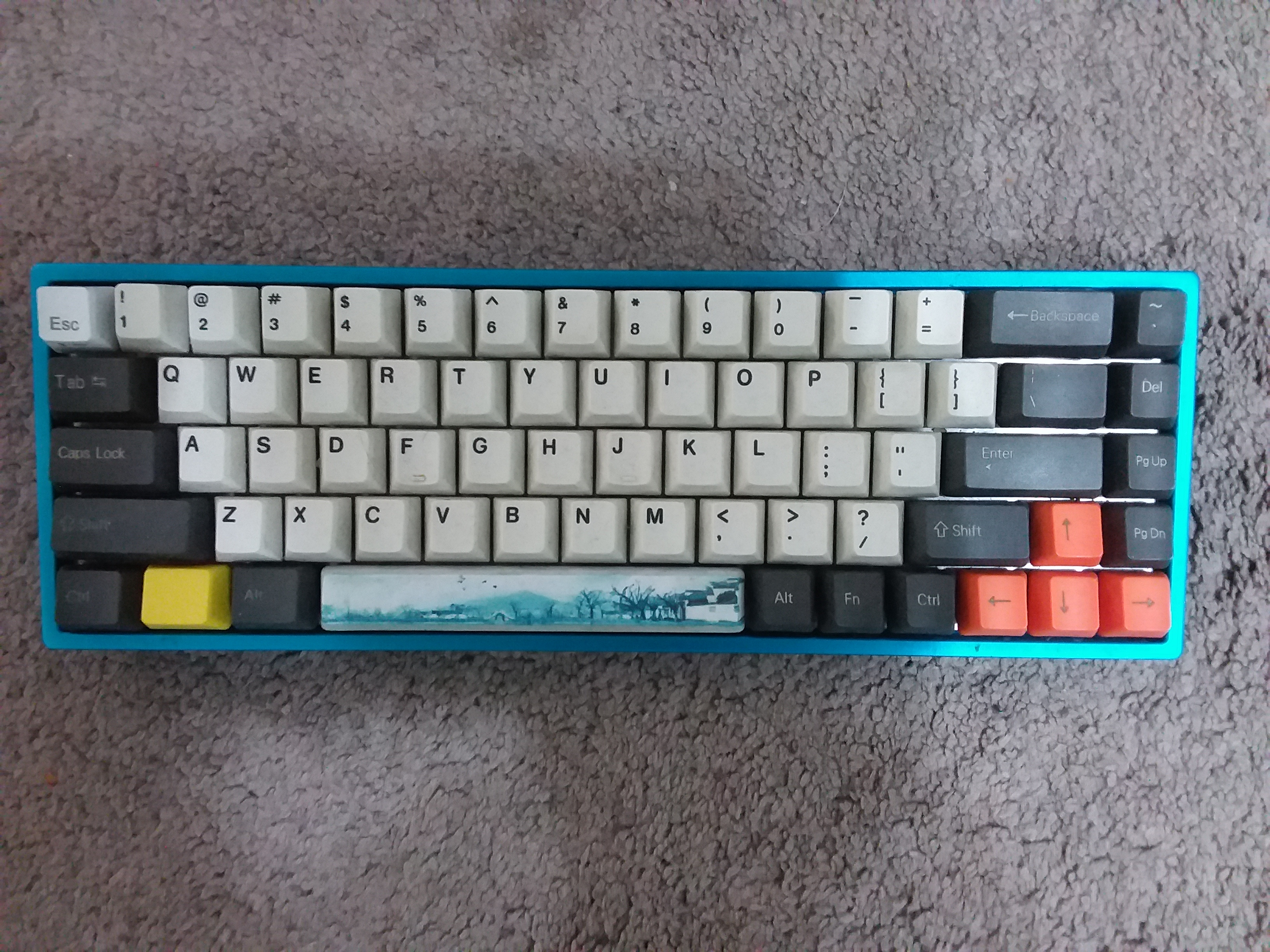
60% has 60 keys (note that there are no dedicated arrow keys)
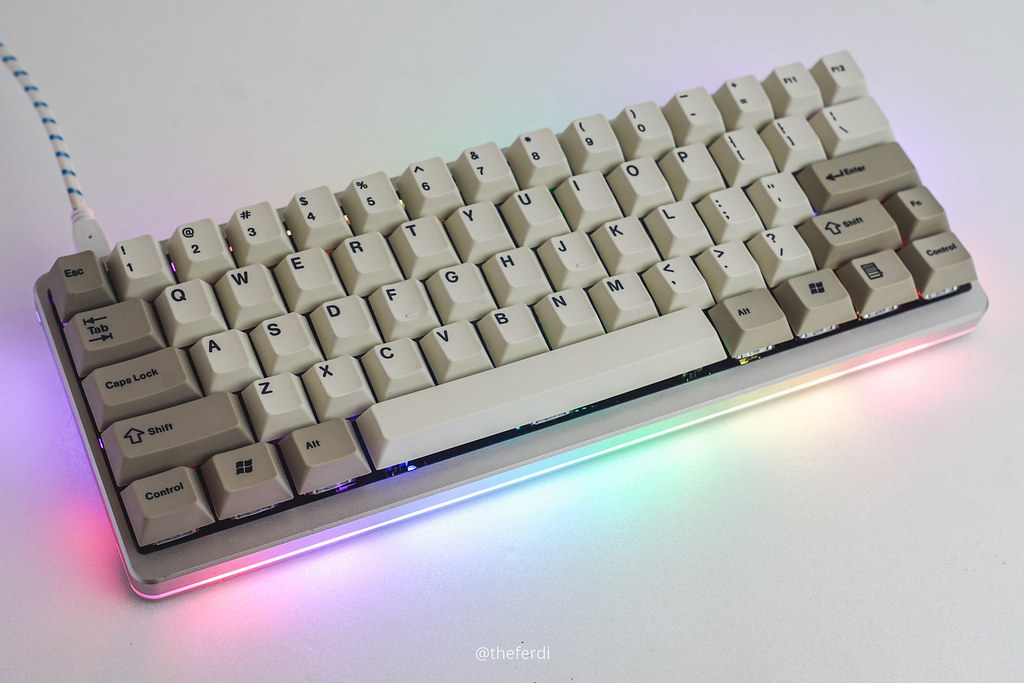
and 40% have 40 keys.
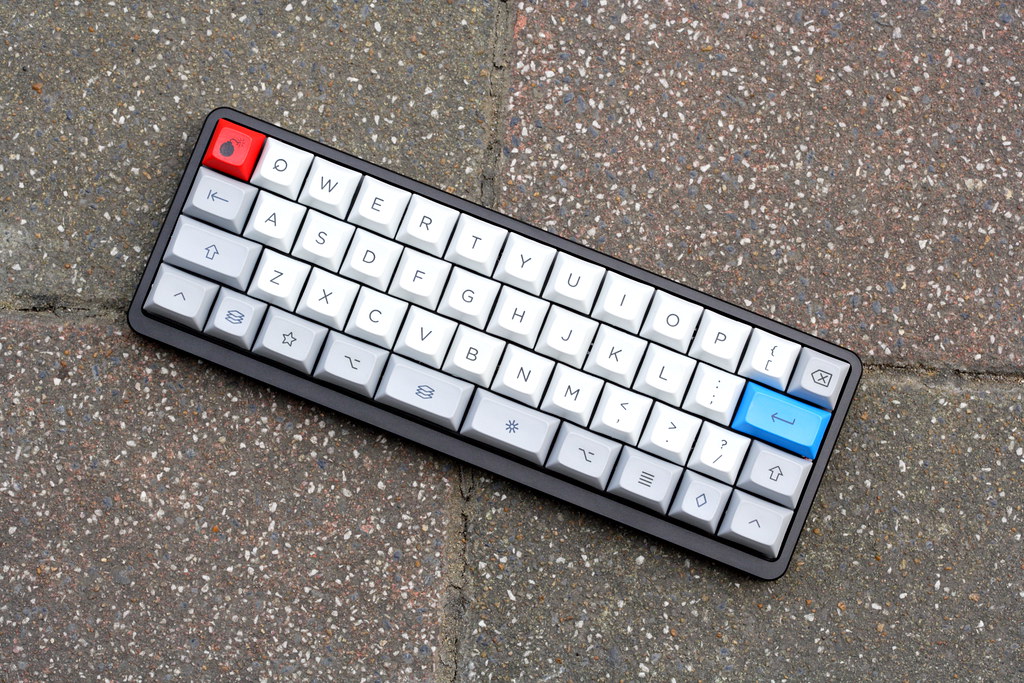
The decision to make is do you want to use a board where some modifiers are needed to get to all “traditional” actions (eg. a Fn key needs to be pressed to change a 9 to a F9).
Case style
The case that surrounds the board has two effects on your typing experience. There is the flexibility of the material being used, and the sound that is generated.
An aluminium case is going to have a lot less flex in it, weigh more, and sound very different to a plastic case. Whilst aluminium and plastic are the predominant types available, the truth is that the sky is the limit (I’ve personally seen woods, plastics, metals, and concrete [yes, really] cases).
The way that the sound from hitting the keys reverberates and echoes after hitting the case is highly subjective.
The decision to make is, how the case makes the typing sound, and feel, and how much weight that the case adds to the board. I often sit with the keyboard in my lap, and the aluminium case on my tada68 can be quite tiresome after a while.
Switch choice
Be prepared for a multitude of seemingly endless and confusing choices of manufacturers, and switch types.
It might seem overwhelming at first, but the truth is there are only 3 (or 4) things to be aware of.
A switch sits between the board and the keycap, and translates the physical tap to an electronic signal to send to the computer.
There are buckling springs, but they’re in a class of their own, and I don’t have any recent experience with them (My long dead SGI Indy keyboard, which I loved, was buckling spring I believe).
So, with the cherry style switches (so called because the Cherry company has dominated the mechanical switch marketplace for some time) you need to understand three things.
Note, cherry style switches are manufactured by a number of companies, and aren’t the only style out there, but, the style is predominant, and easier to find keycaps for that will connect properly. Make sure you check that the style of the switch is compatible with your board and your key cap. The safe bet is cherry style, though. (I personally have Kailh, Cherry, and Gateron switches, they’re all Cherry MX compatible)
Activation weight
It’s as simple as, how hard do you type, are you a light fingered touch typist whose fingers gently breeze across the keyboard, or are you like me, a hunt and peck typist who thumps their way around.
I prefer a switch that will allow me to type in my way without “bottoming out” (pushing the key too it’s absolute limit and hitting the underlying board) too easily (in effect the switches provide some cushioning). Whereas the light fingered touch typist will want a lighter weight switch.
Tactile
A tactile “bump” that lets people know that they have activated the switch (a key press is accepted) before bottoming out, allows lighter fingered typists to know that they can move on to the next key.
Click
There is an artificial “click” sound made as a key is activated. This is very much about the sound, and only the sound, made when typing.
There are two other minor points to consider, some manufacturers have added different housings that supposedly make the key cap more stable, less wobbly, and there is always a question on the workmanship/reliability of the switch you buy. The workmanship changes, what might be considered cheap and nasty today, might be thought of as a leading brand tomorrow (and the pace of change is truly astonishing).
Keycaps
Key caps are the pieces on the board that your fingers will touch. They are mostly made from plastic, but there is no reason that they cannot be made from other materials (I own wood and aluminium keycaps, as well as plastic).
There are a number of types of plastic that the keycaps can be made from, the two most prominent are ABS and PBT. By and large ABS is cheaper, but PBT has a superior feel, and PBT will hold that feel for longer.
The way that the characters are printed, embossed, or etched into the keycaps is worth investigating. Largely the different methods change the feel of the keycap, how long the character lasts on the keycap, and if the character allows light through.
There are other aspects, but they’re largely aesthetic, for example I have Puddings on a keyboard because they enhance the lightshow. I also have an Ogre, and an aluminium Captain America, for escape keys on two of my boards.
RGB
Lighting keys and boards is largely seen as a gimmick, but it has its purpose. I often like to sit in the dark watching movies, and typing on things at the same time. Backlighting allows me to do this (because I looks at the keys as I type).
The things to know here are, the LEDs that provide the light can be single or multiple colour, they can be per switch, or under the board, or both.
What the case is made of can have an effect on this. For example I have an acrylic case that allows the light to spill out in every direction. Some plastic and aluminium cases have a piece of acrylic midway through to allow the glow out sideways.
Further, the chips on the boards becomes interesting here. Some boards can be reprogrammed to control the lighting, others come with preset lighting displays that can be cycled through via key combinations, but never changed.
This is my Womier 66 hot swappable RGB board.
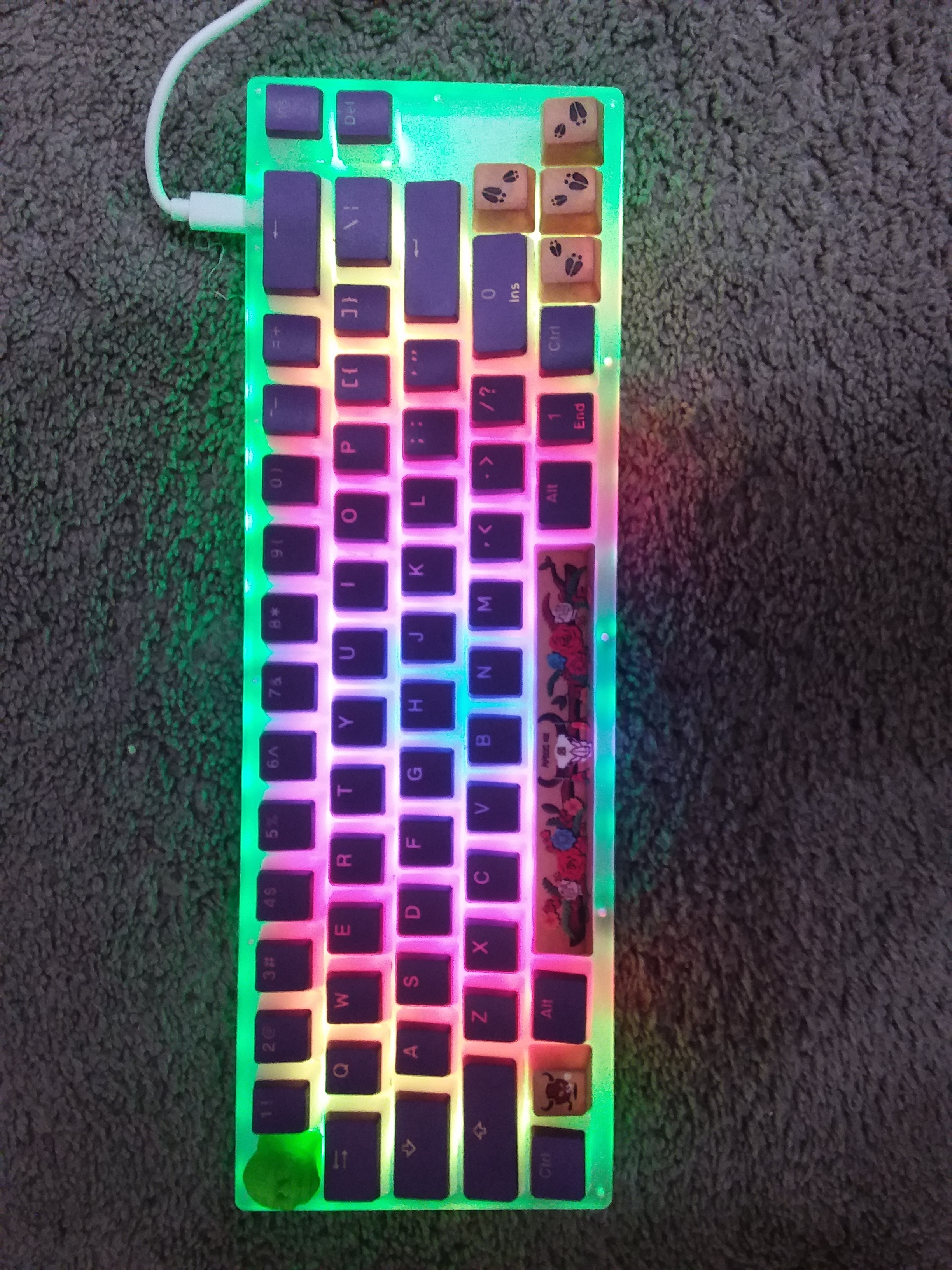
DIY
There are a host of manufacturers that will provide a fully built keyboard, configured how you ask, but there are other choices too.
My Tada 68 was a kit, where I bought the board and case from a manufacturer, then bought some keycaps from another manufacturer, and some switches from a third manufacturer. I then soldered the switches onto the board.
My Womier has hot swappable switches, that is, I can buy new switches and replace the ones I have without any solder required (as long as the switches I get match what the board supports).
I’ve also seen people hand wire boards, that is, they have mounted switches into some structure, then wire them all up together (there are no limits!).
Conclusion
Hopefully you now have a list of things that you can tick off when you look for a board. It’s a little overwhelming at first, but, if you segment each issue, you will find that there are only a few decisions to be made at each step.
The hard part is knowing which is for you, and the only true way to determine that is to try boards out. Go to shops that stock mechanical boards, go to meetups, ask friends, that’s where I got the feel from.
Best of luck on the journey you are embarking on.